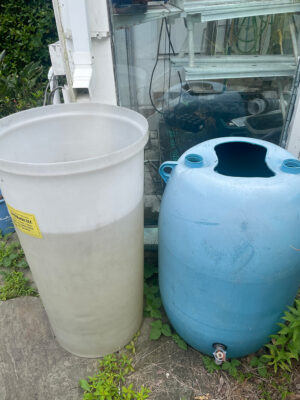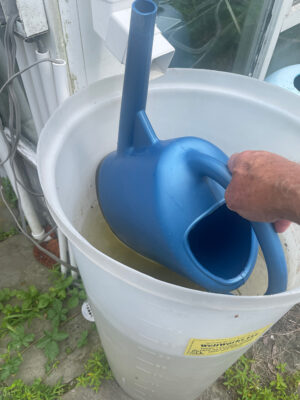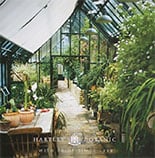
With all the rain we’ve had this summer, I decided it was time to build a rain garden to absorb some of the water runoff from my greenhouse roof. Because the greenhouse is a lean-to-style one attached to my studio building, additional water runs off the studio roof as well. This runoff can fill my two 50-gallon (190-liter) barrels in minutes in a strong thunderstorm. A hundred gallons of runoff collected can water the plants in my greenhouse for up to a week. But when we have a day-long rain instead of a passing thunderstorm, a large amount of water gets wasted as it overflows the barrels and soaks the surrounding lawn. Rather than have a soggy lawn, I’ve decided to build a rain garden.
Basically, a rain garden is a shallow depression where rainwater can be collected and gradually absorbed into the soil without excessive flooding. For example, you might build a small version of a rain garden under a gutter downspout to absorb water runoff instead of letting it run down your driveway and into the street. (In some municipalities, discharging water runoff into the street is actually banned.) A downspout rain garden could be triangular with its tip at the spout and the wider part gradually expanding to allow the water to spread out as exits the spout. Directly under the spout might be gravel or a rock to dissipate water energy as it drops trough the downspout.
For a larger rain garden, a bowl shape is good for holding the rainwater until it can be absorbed into the soil. A rain garden should have a deep bed of mulch to help absorb the water as it gradually soaks into the soil and is taken up by plant roots. However, in a deluge mulch may float away and spread all over the lawn. For this reason you might want to put some sand or gravel mixed with soil under the mulch to help keep the mulch in place.

Plants that don’t mind “wet feet” are best for bordering a rain garden. In a larger rain garden, bee balm (Monarda) is a possible planting, but be aware that it quickly spreads. Another plant that likes damp soil is New England aster, which is very common in our local area. Blue vervain also grows well in damp areas, and, like the other two choices mentioned, it attracts pollinators, including bees and butterflies. Other plants that can live in damp gardens are some anemones, lobelias and aslepias.
Shrubs such as winterberry and varieties of dogwood enjoy moist soil, too, and can be used surrounding a very large rain garden. The visual possibilities for the rain garden you create are limited only by your imagination.


